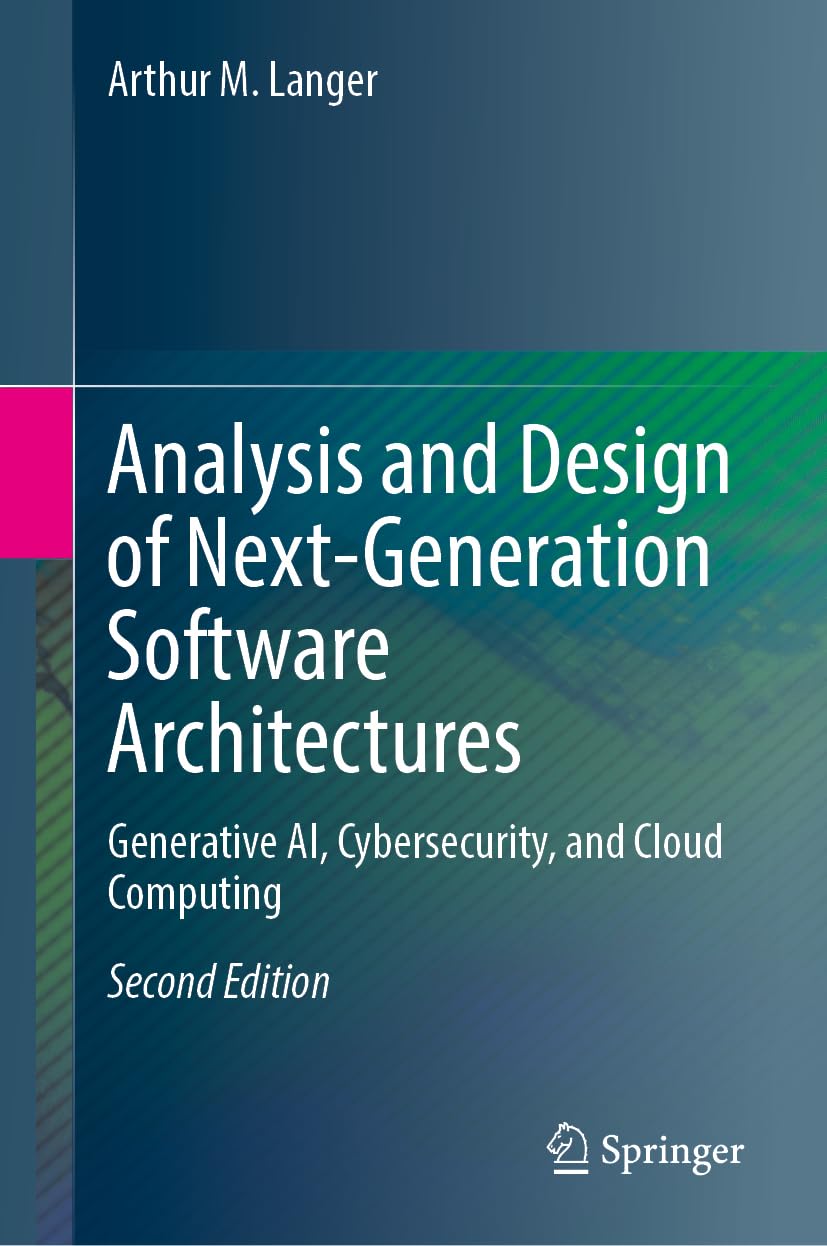

خرید و دانلود نسخه کامل کتاب Analysis and Design of Next-Generation Software Architectures: Generative AI, Cybersecurity, and Cloud Computing Second Edition ویرایش دوم
199,000 تومان قیمت اصلی 199,000 تومان بود.129,000 تومانقیمت فعلی 129,000 تومان است.
تعداد فروش: 64
| عنوان فارسی | تحلیل و طراحی معماریهای نرمافزاری نسل بعد: هوش مصنوعی مولد، امنیت سایبری و رایانش ابری – ویرایش دوم |
|---|---|
| عنوان اصلی | Analysis and Design of Next-Generation Software Architectures: Generative AI, Cybersecurity, and Cloud Computing Second Edition |
| ویرایش | 2 |
| ناشر | Springer |
| نویسنده | Arthur M. Langer |
| ISBN | 9783031762116, 3031762118 |
| سال نشر | 2025 |
| زبان | English |
| تعداد صفحات | 331 |
| دسته | برنامه نويسي |
| فرمت کتاب | PDF – اصلی |
| حجم فایل | 9 مگابایت |
آنتونی رابینز میگه : من در 40 سالگی به جایی رسیدم که برای رسیدن بهش 82 سال زمان لازمه و این رو مدیون کتاب خواندن زیاد هستم.
Analysis and Design of Next-Generation Software Architectures: Generative AI, Cybersecurity, and Cloud Computing Second Edition
توضیحات فارسی
کتاب تحلیل و طراحی معماریهای نرمافزاری نسل بعد: هوش مصنوعی مولد، امنیت سایبری و رایانش ابری – ویرایش دوم نوشتهی «آرتور ام. لنگر» منبعی جامع و پیشرفته برای متخصصان حوزه مهندسی نرمافزار، معماران سیستم و مدیران فناوری اطلاعات است که به دنبال درک عمیق از چالشها و فرصتهای معماریهای نوین در عصر دیجیتال هستند.
این اثر با نگاهی چندبعدی، به بررسی اصول طراحی و تحلیل سیستمهای نرمافزاری پیچیده میپردازد و نشان میدهد چگونه فناوریهای نوینی همچون هوش مصنوعی مولد (Generative AI)، امنیت سایبری (Cybersecurity) و رایانش ابری (Cloud Computing) در شکلدهی به نسل جدید معماریهای نرمافزاری نقش دارند.
در ویرایش دوم، نویسنده بهروزرسانیهای مهمی در زمینهی مدلسازی سیستمها، خودکارسازی فرآیندهای طراحی، مدیریت دادههای هوشمند و رویکردهای امنیتمحور ارائه داده است. بخشهایی از کتاب به بررسی کاربردهای هوش مصنوعی در مهندسی نرمافزار، از جمله تولید خودکار کد، تحلیل رفتار سیستمها و طراحی تطبیقی اختصاص دارد.
آرتور لنگر با ترکیب مفاهیم نظری، مثالهای عملی و چارچوبهای سازمانی، کتابی خلق کرده است که هم برای دانشجویان تحصیلات تکمیلی و هم برای متخصصان صنعت فناوری سودمند است. این کتاب بهویژه برای افرادی که میخواهند استراتژیهای نرمافزاری خود را با روندهای نوین فناوری و الزامات امنیتی همسو کنند، یک مرجع کاربردی و الهامبخش به شمار میآید.
English Description
Analysis and Design of Next-Generation Software Architectures: Generative AI, Cybersecurity, and Cloud Computing (Second Edition) by Arthur M. Langer is an authoritative and forward-looking guide that explores the evolving landscape of software architecture in the era of intelligent, secure, and cloud-driven systems.
This updated edition provides a deep analysis of how emerging technologies—particularly Generative Artificial Intelligence, Cybersecurity frameworks, and Cloud Computing paradigms—are reshaping the principles of software design and implementation. The author presents a structured approach for building scalable, adaptive, and secure software ecosystems that align with organizational and technological goals.
Through a blend of theoretical insights and practical methodologies, Langer introduces tools for system modeling, architecture evaluation, process automation, and risk mitigation. The book also discusses the integration of generative AI techniques into software engineering workflows, including automated coding, intelligent testing, and architectural optimization.
Written for both academics and professionals, this work serves as a bridge between conceptual understanding and real-world application. It empowers software architects, IT leaders, and developers to design robust, future-ready architectures capable of thriving in an era defined by innovation, interconnectedness, and cybersecurity challenges.



نقد و بررسیها
هنوز بررسیای ثبت نشده است.